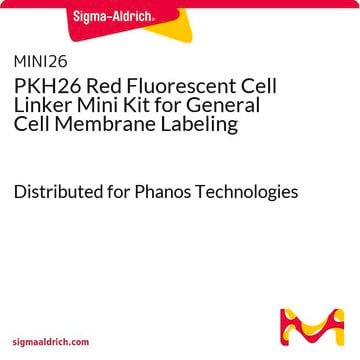C9623
Chetomin
from Chaetomium cochliodes, ≥98% (HPLC)
Sinónimos:
Chaetomin, NSC 289491
About This Item
Productos recomendados
origen biológico
Chaetomium cochliodes
Nivel de calidad
Ensayo
≥98% (HPLC)
Formulario
powder
solubilidad
DMSO: soluble
acetone: soluble
ethyl acetate: soluble
temp. de almacenamiento
−20°C
cadena SMILES
S1SC9(N(C(=O)C1(N(C9=O)C)CO)C)Cc2c3c([n](c2)C54C(N7C8(SSC(N(C8=O)C)(C7=O)CO)C5)Nc6c4cccc6)cccc3
InChI
1S/C31H30N6O6S4/c1-33-25(42)30(15-38)34(2)23(40)28(33,44-46-30)12-17-13-36(21-11-7-4-8-18(17)21)27-14-29-24(41)35(3)31(16-39,47-45-29)26(43)37(29)22(27)32-20-10-6-5-9-19(20)27/h4-11,13,22,32,38-39H,12,14-16H2,1-3H3
Clave InChI
ZRZWBWPDBOVIGQ-UHFFFAOYSA-N
Acciones bioquímicas o fisiológicas
Palabra de señalización
Danger
Frases de peligro
Consejos de prudencia
Clasificaciones de peligro
Acute Tox. 3 Oral
Código de clase de almacenamiento
6.1C - Combustible acute toxic Cat.3 / toxic compounds or compounds which causing chronic effects
Clase de riesgo para el agua (WGK)
WGK 3
Punto de inflamabilidad (°F)
Not applicable
Punto de inflamabilidad (°C)
Not applicable
Elija entre una de las versiones más recientes:
Certificados de análisis (COA)
¿No ve la versión correcta?
Si necesita una versión concreta, puede buscar un certificado específico por el número de lote.
¿Ya tiene este producto?
Encuentre la documentación para los productos que ha comprado recientemente en la Biblioteca de documentos.
Los clientes también vieron
Nuestro equipo de científicos tiene experiencia en todas las áreas de investigación: Ciencias de la vida, Ciencia de los materiales, Síntesis química, Cromatografía, Analítica y muchas otras.
Póngase en contacto con el Servicio técnico















